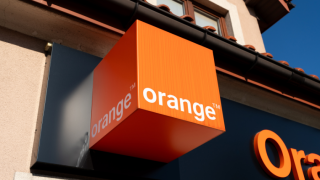The company worked with London-based Stratospheric Platforms (SPL), a remotely powered aircraft specialist in which Deutsche Telekom is the largest shareholder.
Richard Deakin, CEO of SPL, said: “We are looking forward to demonstrating our 5G antenna which will shortly be ready for stratospheric flight testing.”
DT said it holds 38% of SPL and has exclusive licences to operate the technology, when commercially deployable, in 18 countries around the world, providing the ability for over 500 million people to potentially benefit from this exciting development.
Bruno Jacobfeuerborn, CEO of the German operator’s tower subsidiary, Deutsche Funkturm, said: “SPL’s unique technology will enable us to deliver to all our customers, wherever they are located, a true broadband experience. We welcome other investors to join us on this journey to cost-effectively address the challenges of broadband roll-out.”
Deutsche Telekom and SPL said that this was the “world’s first successful demonstration of high speed LTE/4G data and voice connectivity via a remotely piloted aircraft”.
The companies said the antenna provides coverage on the ground equivalent to around 500 terrestrial cells and will enable near 100% high quality coverage over an area up to 140km in diameter.
Just days ago SoftBank’s HAPSMobile said it had successfully transmitted 4G mobile signals – including a video call – from an uncrewed solar-powered aircraft 19km above New Mexico. HAPSMobile was working with Google’s sister company Loon, which has also brought 4G coverage to remote parts of Kenya by balloon-mounted platforms.
The German demonstration was carried out in Bavaria using a remotely piloted aircraft system (RPAS) operating at 45,000ft or 14km. The trial used an H3Grob 520 (pictured), built by Grob, an aircraft company based 50km west of Munich.
Spectrum in the 2.1GHz band carried a voice over LTE (VoLTE) call, a video call and a data call, and streamed video.
The project used what Deutsche Telekom called a standard smartphone and that was linked into its live terrestrial network. The stratospheric test demonstrated download speeds of 70Mbps and upload speeds of 23Mbps over a 10MHz bandwidth.
Deakin, a former CEO of National Air Traffic Services (NATS), the UK’s air-traffic control service, said: “We have operated quietly for the last five years to ensure that we significantly de-risked the key technologies before revealing the company to the world.”
He added: “We will be working with our partners and others over the next few years to bring this to operational deployment around 2024 with key benefits that distinguish our solution from all other competition and a significant cost advantage, which allows the telecommunication companies to provide users, wherever they are, with a unparalleled high quality customer experience.”
SPL is working on a platform using a hydrogen fuel cells, which it says can produce 49kW of power. The platform will have a wingspan of 60m, equivalent to that of a Boeing 747, but weighs only 3.5 tonnes, said SPL.
The Loon and SoftBank alternatives both use solar power, which means they cannot operate for long after nightfall.
The platform will be backhauled into a mobile operator’s network using millimetre-wave spectrum, with a 3m dish transmitting and receiving mobile signals to and from users.
SPL said: “The next generation of development … will enable significantly higher spectral efficiency whereby platforms operate in conjunction with one other, rather than acting as individual ‘masts in the sky’.”






